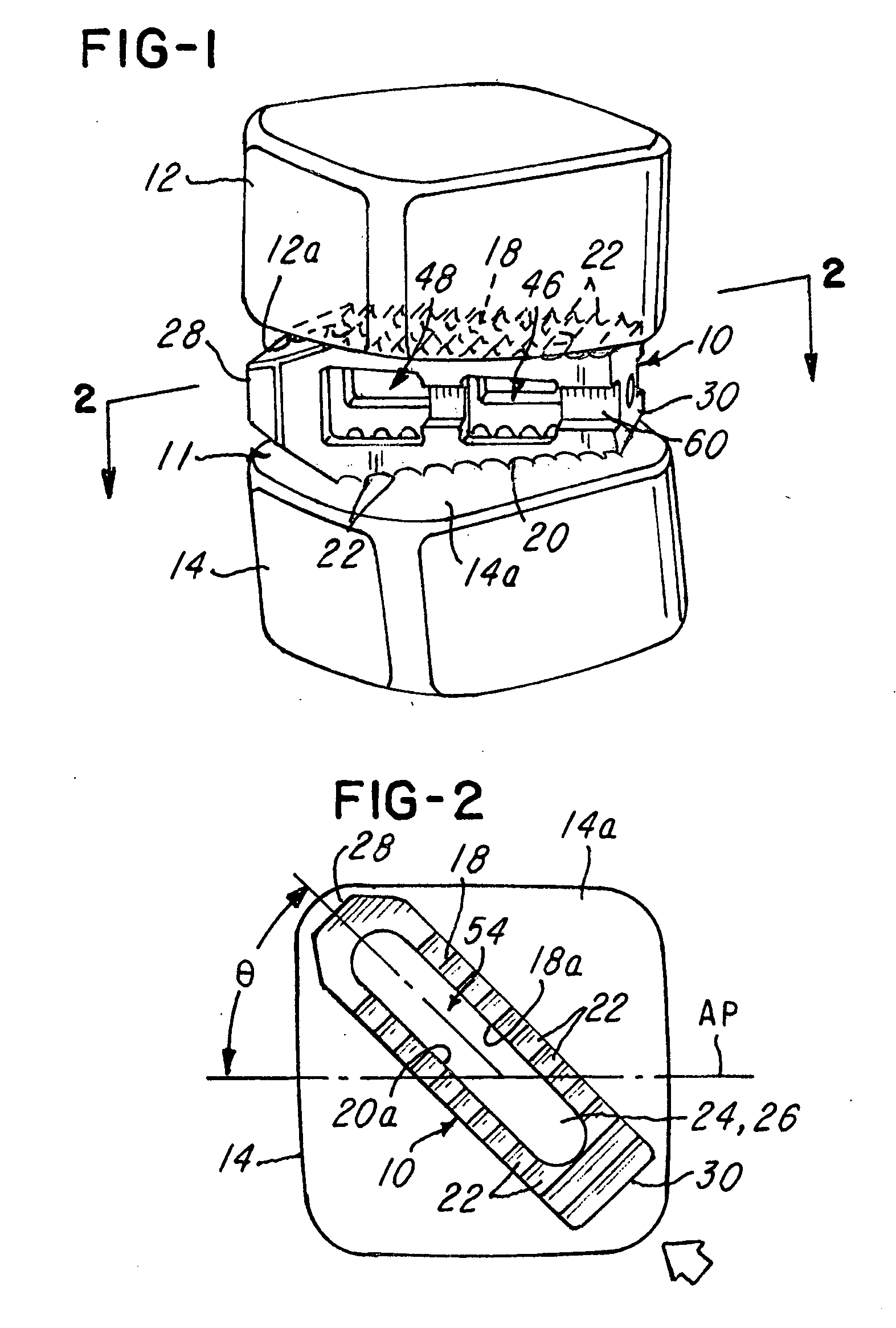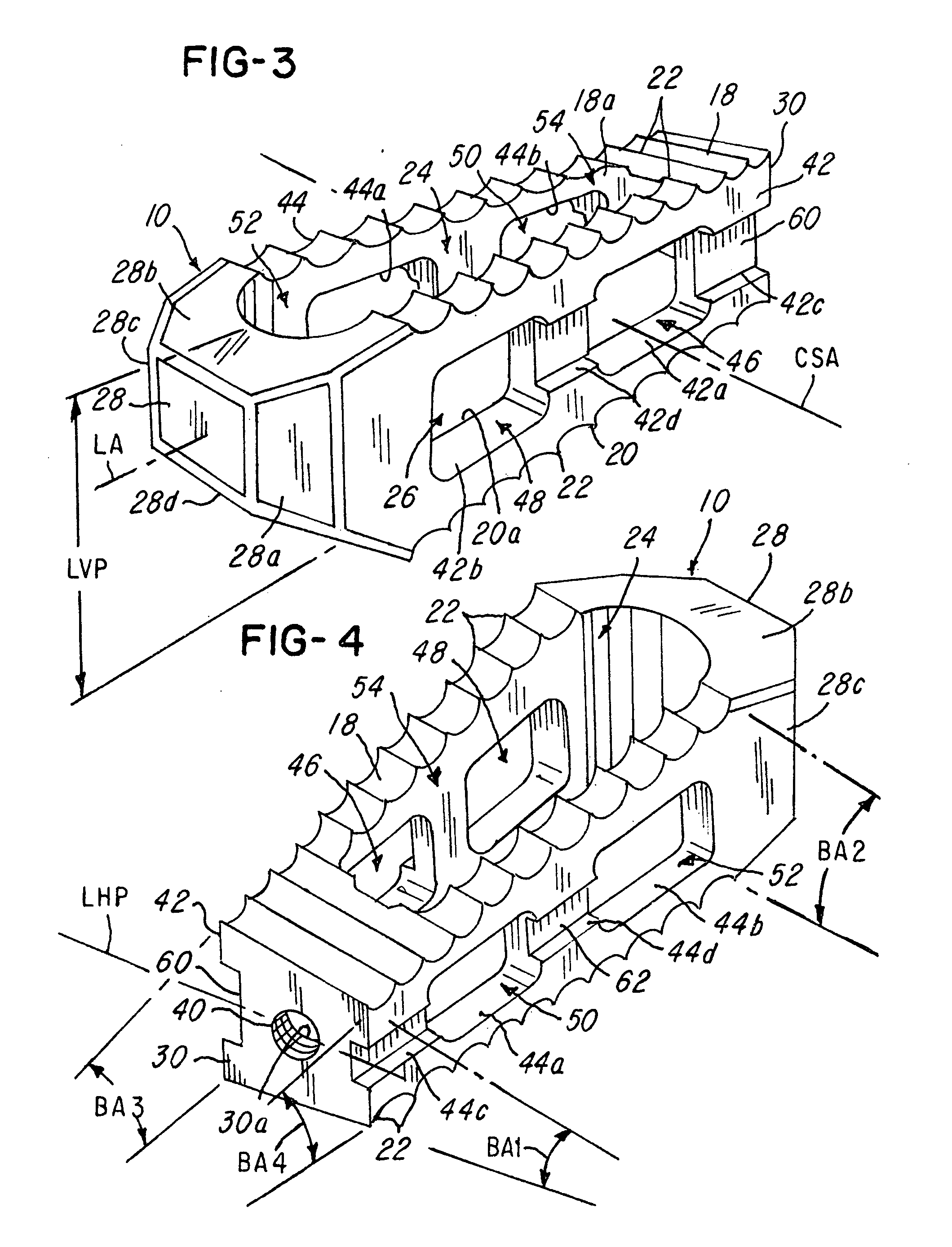Prosthetic implant with biplanar angulation and compound angles
a technology of compound angles and prosthetic implants, applied in the field of prosthetic implants, can solve the problems of poor fixation and potential reoperation, difficult rotational step, and the placement of the cage requires rotation, and achieve the effect of reducing or eliminating the need for rotation
- Summary
- Abstract
- Description
- Claims
- Application Information
AI Technical Summary
Benefits of technology
Problems solved by technology
Method used
Image
Examples
Embodiment Construction
[0051]Referring now to FIGS. 1-10, a prosthetic implant or fusion cage 10 is shown for insertion and use in a disk space or disk area 11 between a first vertebra 12 and second vertebra 14. In the illustration being described, the first vertebra 12 has a first or superior surface 12a and the second vertebra 14 has a second or inferior surface 14a, as best illustrated in FIG. 1. The cage 10 is inserted straight posterolaterally, also called a transforamenal approach, into the disk area 11 between the first vertebra 12 and second vertebra 14. As described and shown, the cage 10 is inserted on a diagonal or angled direction with respect to an anterior-posterior axis AP (FIG. 2), such as in the direction of arrow 16 as shown.
[0052]Notice in FIGS. 3 and 4 that the cage 10 comprises a superior or top surface 18 and a generally opposing inferior or bottom surface 20. In the illustration being described, note that the surfaces 18 and 20 are serrated or comprise teeth 22 to facilitate prevent...
PUM
 Login to View More
Login to View More Abstract
Description
Claims
Application Information
 Login to View More
Login to View More - R&D
- Intellectual Property
- Life Sciences
- Materials
- Tech Scout
- Unparalleled Data Quality
- Higher Quality Content
- 60% Fewer Hallucinations
Browse by: Latest US Patents, China's latest patents, Technical Efficacy Thesaurus, Application Domain, Technology Topic, Popular Technical Reports.
© 2025 PatSnap. All rights reserved.Legal|Privacy policy|Modern Slavery Act Transparency Statement|Sitemap|About US| Contact US: help@patsnap.com



